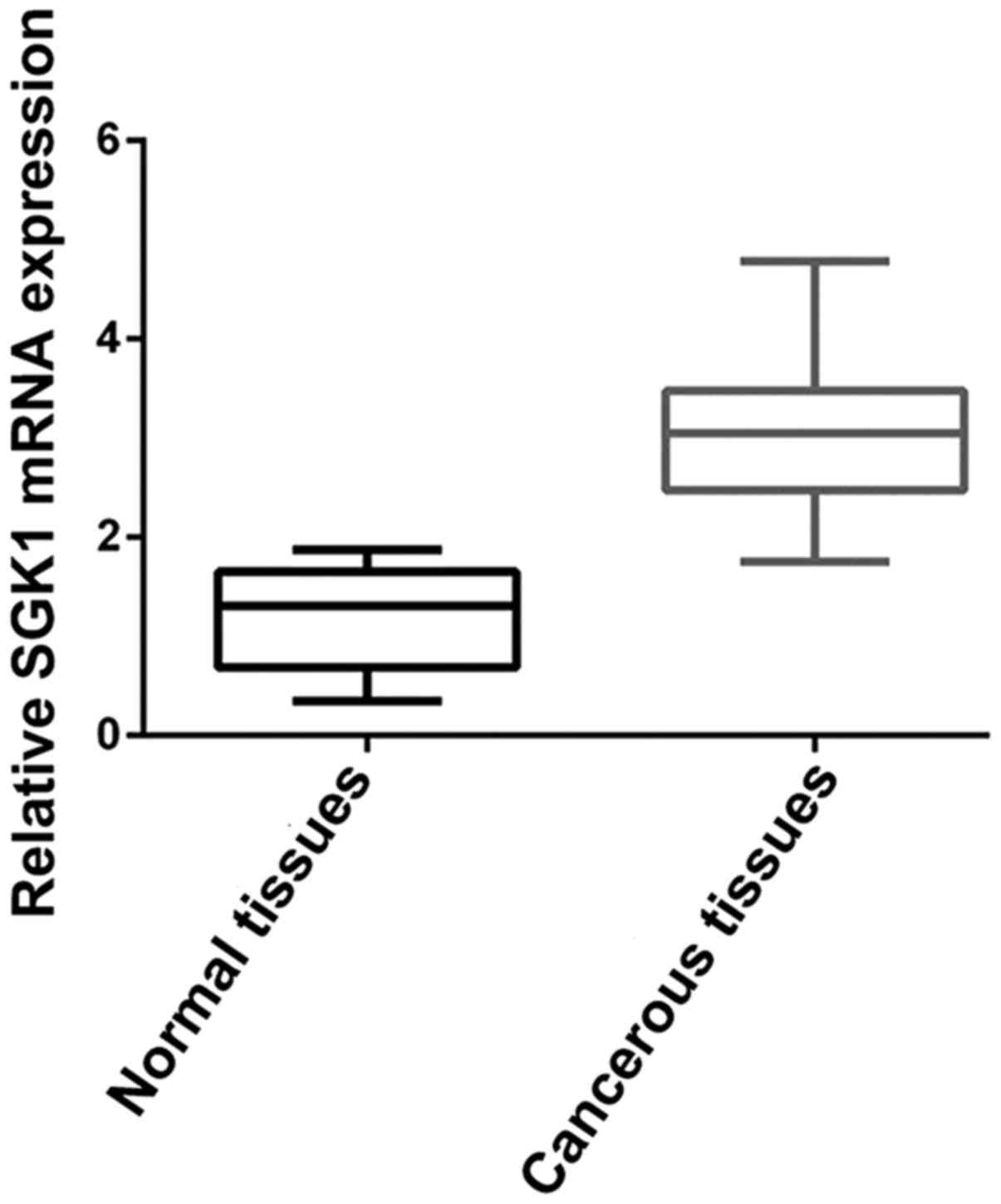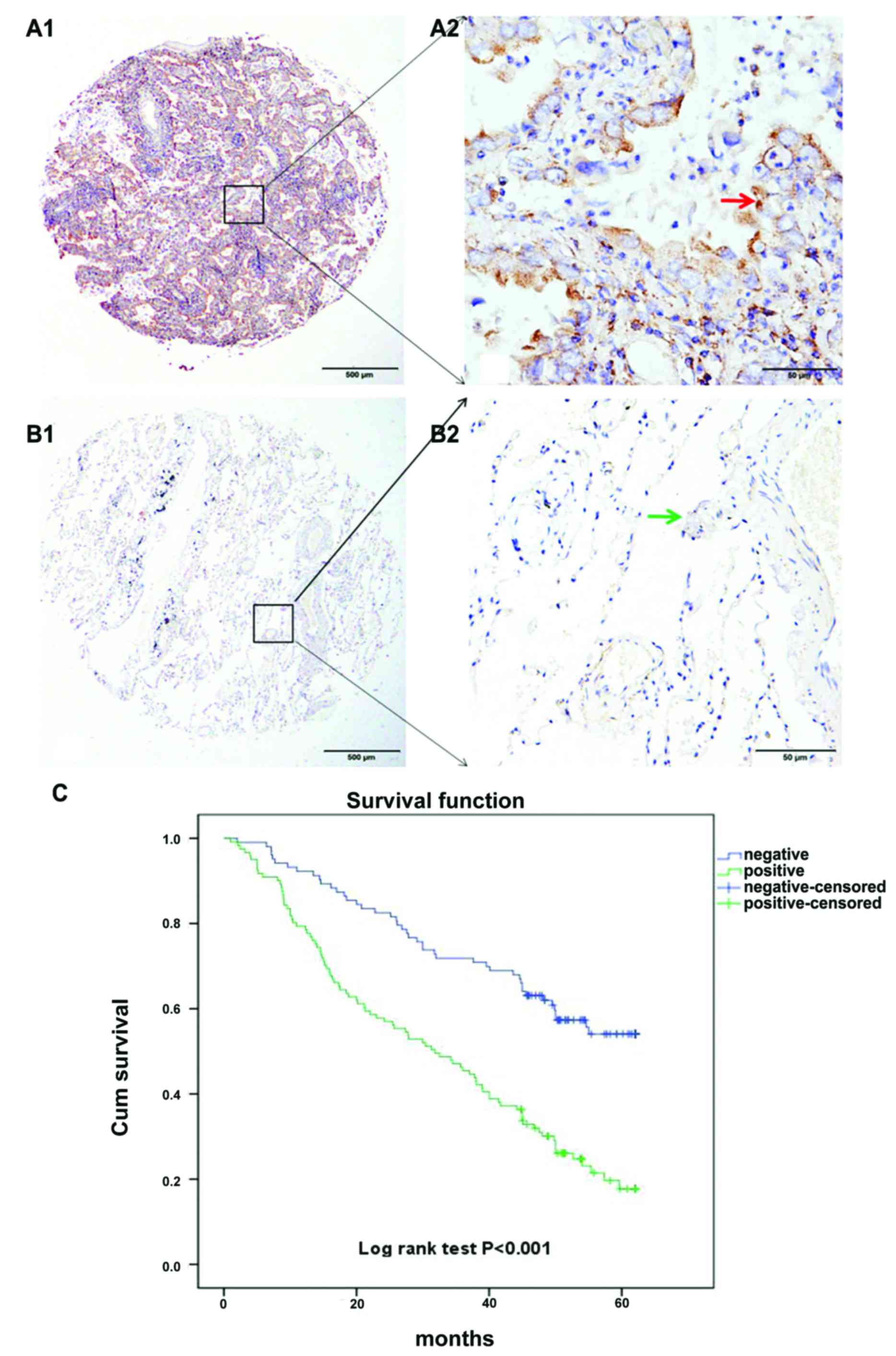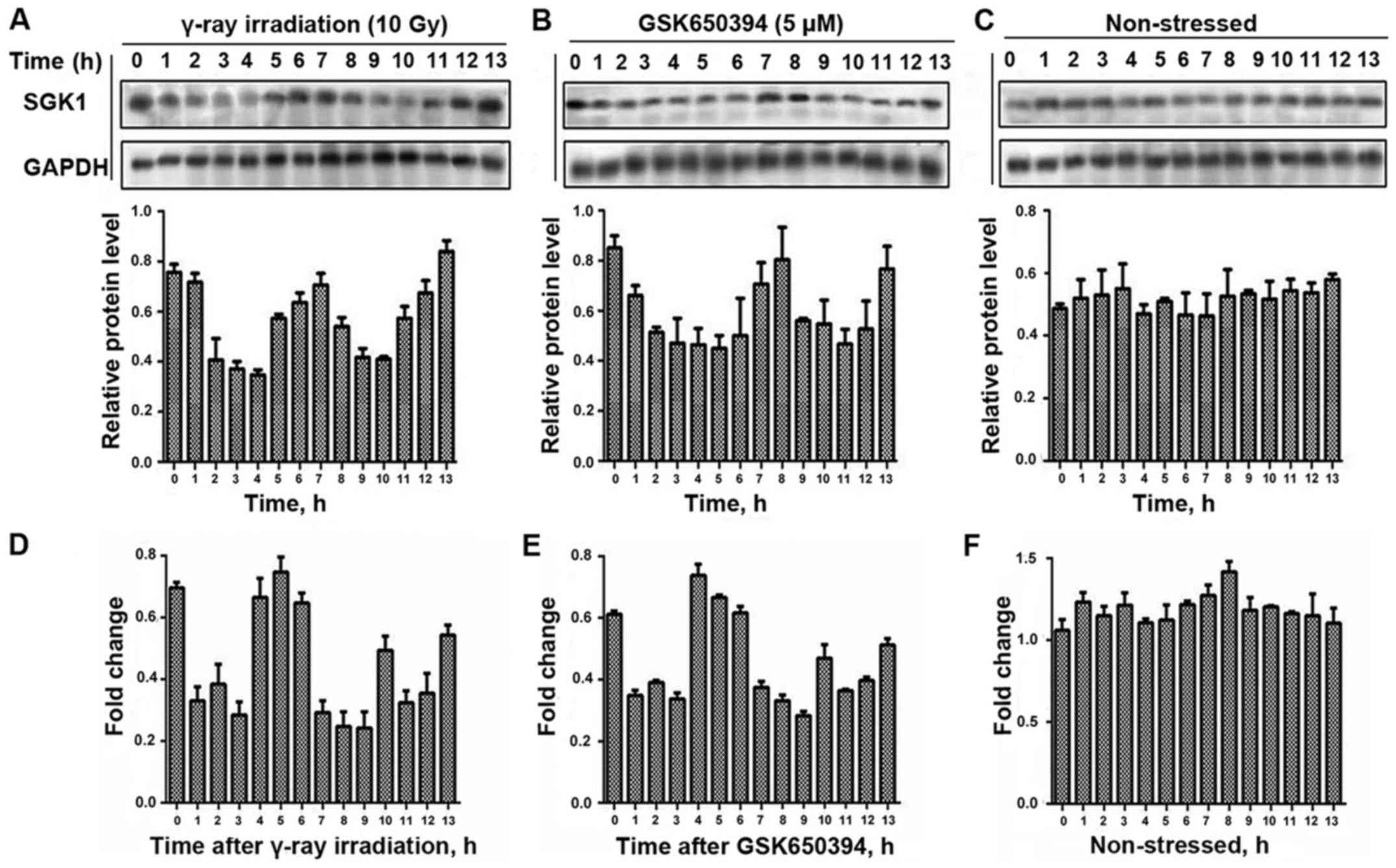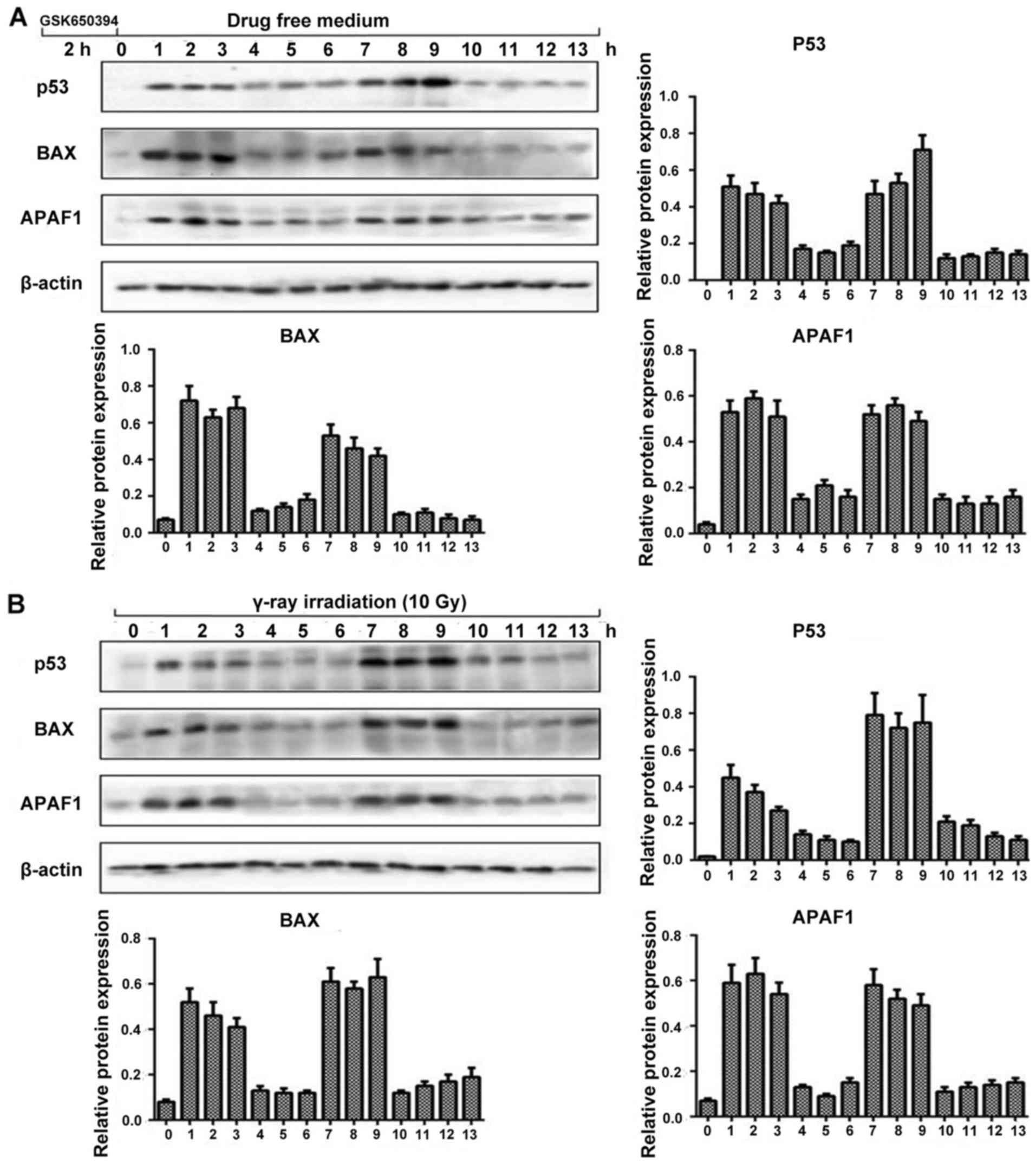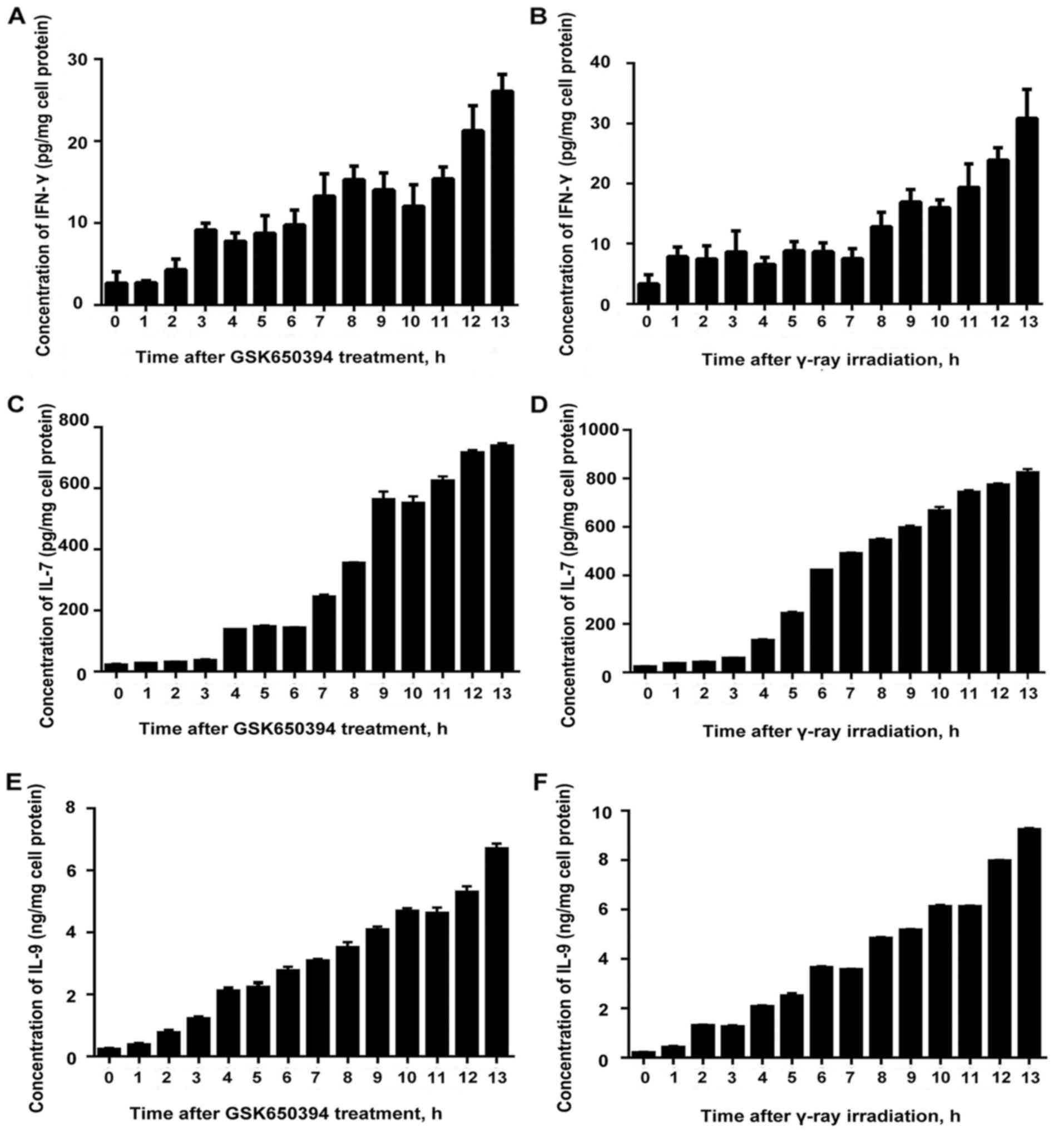|
1
|
Hamra GB, Laden F, Cohen AJ,
Raaschou-Nielsen O, Brauer M and Loomis D: Lung cancer and exposure
to nitrogen dioxide and traffic: A systematic review and
meta-analysis. Environ Health Perspect. 123:1107–1112. 2015.
View Article : Google Scholar : PubMed/NCBI
|
|
2
|
Neal JW and Wakelee HA: Elusive target of
angiogenesis in small-cell lung cancer. J Clin Oncol. 35:1269–1271.
2017. View Article : Google Scholar : PubMed/NCBI
|
|
3
|
Shu W, Yang H, Zhang L, Lu MM and Morrisey
EE: Characterization of a new subfamily of winged-helix/forkhead
(Fox) genes that are expressed in the lung and act as
transcriptional repressors. J Biol Chem. 276:27488–27497. 2001.
View Article : Google Scholar : PubMed/NCBI
|
|
4
|
Hu H, Wang B, Borde M, Nardone J, Maika S,
Allred L, Tucker PW and Rao A: Foxp1 is an essential
transcriptional regulator of B cell development. Nat Immunol.
7:819–826. 2006. View
Article : Google Scholar : PubMed/NCBI
|
|
5
|
Rauhala HE, Porkka KP, Tolonen TT,
Martikainen PM, Tammela TL and Visakorpi T: Dual-specificity
phosphatase 1 and serum/glucocorticoid-regulated kinase are
downregulated in prostate cancer. Int J Cancer. 117:738–745. 2005.
View Article : Google Scholar : PubMed/NCBI
|
|
6
|
Chu S, Rushdi S, Zumpe ET, Mamers P, Healy
DL, Jobling T, Burger HG and Fuller PJ: FSH-regulated gene
expression profiles in ovarian tumours and normal ovaries. Mol Hum
Reprod. 8:426–433. 2002. View Article : Google Scholar : PubMed/NCBI
|
|
7
|
Nasir O, Wang K, Föller M, Gu S, Bhandaru
M, Ackermann TF, Boini KM, Mack A, Klingel K, Amato R, et al:
Relative resistance of SGK1 knockout mice against chemical
carcinogenesis. IUBMB Life. 61:768–776. 2009. View Article : Google Scholar : PubMed/NCBI
|
|
8
|
Ronchi CL, Sbiera S, Leich E, Tissier F,
Steinhauer S, Deutschbein T, Fassnacht M and Allolio B: Low SGK1
expression in human adrenocortical tumors is associated with
ACTH-independent glucocorticoid secretion and poor prognosis. J
Clin Endocrinol Metab. 97:E2251–E2260. 2012. View Article : Google Scholar : PubMed/NCBI
|
|
9
|
Xiaobo Y, Qiang L, Xiong Q, Zheng R,
Jianhua Z, Zhifeng L, Yijiang S and Zheng J: Serum and
glucocorticoid kinase 1 promoted the growth and migration of
non-small cell lung cancer cells. Gene. 576:339–346. 2016.
View Article : Google Scholar : PubMed/NCBI
|
|
10
|
Abbruzzese C, Mattarocci S, Pizzuti L,
Mileo AM, Visca P, Antoniani B, Alessandrini G, Facciolo F, Amato
R, D'Antona L, et al: Determination of SGK1 mRNA in non-small cell
lung cancer samples underlines high expression in squamous cell
carcinomas. J Exp Clin Cancer Res. 31:42012. View Article : Google Scholar : PubMed/NCBI
|
|
11
|
Sun JY, Li C, Shen ZX, Zhang WC, Ai TJ, Du
LJ, Zhang YY, Yao GF, Liu Y, Sun S, et al: Mineralocorticoid
receptor deficiency in macrophages inhibits neointimal hyperplasia
and suppresses macrophage inflammation through SGK1-AP1/NF-κB
pathways. Arterioscler Thromb Vasc Biol. 36:874–885. 2016.
View Article : Google Scholar : PubMed/NCBI
|
|
12
|
Mansley MK, Watt GB, Francis SL, Walker
DJ, Land SC, Bailey MA and Wilson SM: Dexamethasone and insulin
activate serum and glucocorticoid-inducible kinase 1 (SGK1) via
different molecular mechanisms in cortical collecting duct cells.
Physiol Rep. 4:42016. View Article : Google Scholar
|
|
13
|
Arteaga MF and Canessa CM: Functional
specificity of Sgk1 and Akt1 on ENaC activity. Am J Physiol Renal
Physiol. 289:F90–F96. 2005. View Article : Google Scholar : PubMed/NCBI
|
|
14
|
Zhu T, Zhang W and Wang DX: Insulin
up-regulates epithelial sodium channel in LPS-induced acute lung
injury model in rats by SGK1 activation. Injury. 43:1277–1283.
2012. View Article : Google Scholar : PubMed/NCBI
|
|
15
|
Lang F, Böhmer C, Palmada M, Seebohm G,
Strutz-Seebohm N and Vallon V: (Patho)physiological significance of
the serum- and glucocorticoid-inducible kinase isoforms. Physiol
Rev. 86:1151–1178. 2006. View Article : Google Scholar : PubMed/NCBI
|
|
16
|
Lang F, Görlach A and Vallon V: Targeting
SGK1 in diabetes. Expert Opin Ther Targets. 13:1303–1311. 2009.
View Article : Google Scholar : PubMed/NCBI
|
|
17
|
Simon P, Schneck M, Hochstetter T,
Koutsouki E, Mittelbronn M, Merseburger A, Weigert C, Niess A and
Lang F: Differential regulation of serum- and
glucocorticoid-inducible kinase 1 (SGK1) splice variants based on
alternative initiation of transcription. Cell Physiol Biochem.
20:715–728. 2007. View Article : Google Scholar : PubMed/NCBI
|
|
18
|
Bai JA, Xu GF, Yan LJ, Zeng WW, Ji QQ, Wu
JD and Tang QY: SGK1 inhibits cellular apoptosis and promotes
proliferation via the MEK/ERK/p53 pathway in colitis. World J
Gastroenterol. 21:6180–6193. 2015. View Article : Google Scholar : PubMed/NCBI
|
|
19
|
Purvis JE and Lahav G: Encoding and
decoding cellular information through signaling dynamics. Cell.
152:945–956. 2013. View Article : Google Scholar : PubMed/NCBI
|
|
20
|
Purvis JE, Karhohs KW, Mock C, Batchelor
E, Loewer A and Lahav G: p53 dynamics control cell fate. Science.
336:1440–1444. 2012. View Article : Google Scholar : PubMed/NCBI
|
|
21
|
Brunet A, Park J, Tran H, Hu LS, Hemmings
BA and Greenberg ME: Protein kinase SGK mediates survival signals
by phosphorylating the forkhead transcription factor FKHRL1
(FOXO3a). Mol Cell Biol. 21:952–965. 2001. View Article : Google Scholar : PubMed/NCBI
|
|
22
|
You H, Jang Y, You-Ten AI, Okada H, Liepa
J, Wakeham A, Zaugg K and Mak TW: p53-dependent inhibition of
FKHRL1 in response to DNA damage through protein kinase SGK1. Proc
Natl Acad Sci USA. 101:pp. 14057–14062. 2004; View Article : Google Scholar : PubMed/NCBI
|
|
23
|
Feng Z, Liu L, Zhang C, Zheng T, Wang J,
Lin M, Zhao Y, Wang X, Levine AJ and Hu W: Chronic restraint stress
attenuates p53 function and promotes tumorigenesis. Proc Natl Acad
Sci USA. 109:pp. 7013–7018. 2012; View Article : Google Scholar : PubMed/NCBI
|
|
24
|
Shi G, Wang Q, Zhou X, Li J, Liu H, Gu J,
Wang H, Wu Y, Ding L, Ni S, et al: Response of human non-small-cell
lung cancer cells to the influence of Wogonin with SGK1 dynamics.
Acta Biochim Biophys Sin (Shanghai). 49:302–310. 2017. View Article : Google Scholar : PubMed/NCBI
|
|
25
|
Sherk AB, Frigo DE, Schnackenberg CG, Bray
JD, Laping NJ, Trizna W, Hammond M, Patterson JR, Thompson SK,
Kazmin D, et al: Development of a small-molecule serum- and
glucocorticoid-regulated kinase-1 antagonist and its evaluation as
a prostate cancer therapeutic. Cancer Res. 68:7475–7483. 2008.
View Article : Google Scholar : PubMed/NCBI
|
|
26
|
Sung J, Bochicchio GV, Joshi M, Bochicchio
K, Costas A, Tracy K and Scalea TM: Admission serum albumin is
predicitve of outcome in critically ill trauma patients. Am Surg.
70:1099–1102. 2004.PubMed/NCBI
|
|
27
|
Webster MK, Goya L, Ge Y, Maiyar AC and
Firestone GL: Characterization of sgk, a novel member of the
serine/threonine protein kinase gene family which is
transcriptionally induced by glucocorticoids and serum. Mol Cell
Biol. 13:2031–2040. 1993. View Article : Google Scholar : PubMed/NCBI
|
|
28
|
Lang F and Görlach A: Heterocyclic
indazole derivatives as SGK1 inhibitors, WO2008138448. Expert Opin
Ther Pat. 20:129–135. 2010. View Article : Google Scholar : PubMed/NCBI
|
|
29
|
Nakashima RA, Paggi MG and Pedersen PL:
Contributions of glycolysis and oxidative phosphorylation to
adenosine 5′-triphosphate production in AS-30D hepatoma cells.
Cancer Res. 44:5702–5706. 1984.PubMed/NCBI
|
|
30
|
Wallace DC: Mitochondria and cancer:
Warburg addressed. Cold Spring Harb Symp Quant Biol. 70:363–374.
2005. View Article : Google Scholar : PubMed/NCBI
|
|
31
|
Pedersen PL: Warburg, me and Hexokinase 2:
Multiple discoveries of key molecular events underlying one of
cancers' most common phenotypes, the Warburg Effect, i.e., elevated
glycolysis in the presence of oxygen. J Bioenerg Biomembr.
39:211–222. 2007. View Article : Google Scholar : PubMed/NCBI
|
|
32
|
Lahav G, Rosenfeld N, Sigal A,
Geva-Zatorsky N, Levine AJ, Elowitz MB and Alon U: Dynamics of the
p53-Mdm2 feedback loop in individual cells. Nat Genet. 36:147–150.
2004. View
Article : Google Scholar : PubMed/NCBI
|
|
33
|
Hamstra DA, Bhojani MS, Griffin LB, Laxman
B, Ross BD and Rehemtulla A: Real-time evaluation of p53
oscillatory behavior in vivo using bioluminescent imaging. Cancer
Res. 66:7482–7489. 2006. View Article : Google Scholar : PubMed/NCBI
|
|
34
|
Francisco DC, Peddi P, Hair JM, Flood BA,
Cecil AM, Kalogerinis PT, Sigounas G and Georgakilas AG: Induction
and processing of complex DNA damage in human breast cancer cells
MCF-7 and nonmalignant MCF-10A cells. Free Radic Biol Med.
44:558–569. 2008. View Article : Google Scholar : PubMed/NCBI
|
|
35
|
Amato R, D'Antona L, Porciatti G, Agosti
V, Menniti M, Rinaldo C, Costa N, Bellacchio E, Mattarocci S,
Fuiano G, et al: Sgk1 activates MDM2-dependent p53 degradation and
affects cell proliferation, survival, and differentiation. J Mol
Med (Berl). 87:1221–1239. 2009. View Article : Google Scholar : PubMed/NCBI
|
|
36
|
Bianchi F, Nicassio F and Di Fiore PP:
Unbiased vs. biased approaches to the identification of cancer
signatures: The case of lung cancer. Cell Cycle. 7:729–734. 2008.
View Article : Google Scholar : PubMed/NCBI
|
|
37
|
Guan P, Huang D, He M and Zhou B: Lung
cancer gene expression database analysis incorporating prior
knowledge with support vector machine-based classification method.
J Exp Clin Cancer Res. 28:1032009. View Article : Google Scholar : PubMed/NCBI
|
|
38
|
Heikamp EB, Patel CH, Collins S, Waickman
A, Oh MH, Sun IH, Illei P, Sharma A, Naray-Fejes-Toth A, Fejes-Toth
G, et al: The AGC kinase SGK1 regulates TH1 and TH2 differentiation
downstream of the mTORC2 complex. Nat Immunol. 15:457–464. 2014.
View Article : Google Scholar : PubMed/NCBI
|
|
39
|
Rearden R, Sah A, Doff B, Kobayashi T,
McKee SJ, Leggatt GR and Mattarollo SR: Control of B-cell lymphoma
by therapeutic vaccination and acquisition of immune resistance is
independent of direct tumour IFN-gamma signalling. Immunol Cell
Biol. 94:554–562. 2016. View Article : Google Scholar : PubMed/NCBI
|
|
40
|
Lugade AA, Sorensen EW, Gerber SA, Moran
JP, Frelinger JG and Lord EM: Radiation-induced IFN-gamma
production within the tumor microenvironment influences antitumor
immunity. J Immunol. 180:3132–3139. 2008. View Article : Google Scholar : PubMed/NCBI
|
|
41
|
Goldstraw P: The 7th edition of TNM in
lung cancer: What now? J Thorac Oncol. 4:671–673. 2009. View Article : Google Scholar : PubMed/NCBI
|
|
42
|
Yuan CH, Yang XQ, Zhu CL, Liu SP, Wang BC
and Wang FB: Interleukin-7 enhances the in vivo anti-tumor activity
of tumor-reactive CD8+ T cells with induction of
IFN-gamma in a murine breast cancer model. Asian Pac J Cancer Prev.
15:265–271. 2014. View Article : Google Scholar : PubMed/NCBI
|
|
43
|
Shi LZ, Fu T, Guan B, Chen J, Blando JM,
Allison JP, Xiong L, Subudhi SK, Gao J and Sharma P: Interdependent
IL-7 and IFN-γ signalling in T-cell controls tumour eradication by
combined α-CTLA-4+α-PD-1 therapy. Nat Commun. 7:123352016.
View Article : Google Scholar : PubMed/NCBI
|
|
44
|
Lu Y, Hong B, Li H, Zheng Y, Zhang M, Wang
S, Qian J and Yi Q: Tumor-specific IL-9-producing CD8+
Tc9 cells are superior effector than type-I cytotoxic Tc1 cells for
adoptive immunotherapy of cancers. Proc Natl Acad Sci USA. 111:pp.
2265–2270. 2014; View Article : Google Scholar : PubMed/NCBI
|
|
45
|
Lu Y, Hong S, Li H, Park J, Hong B, Wang
L, Zheng Y, Liu Z, Xu J, He J, et al: Th9 cells promote antitumor
immune responses in vivo. J Clin Invest. 122:4160–4171. 2012.
View Article : Google Scholar : PubMed/NCBI
|



